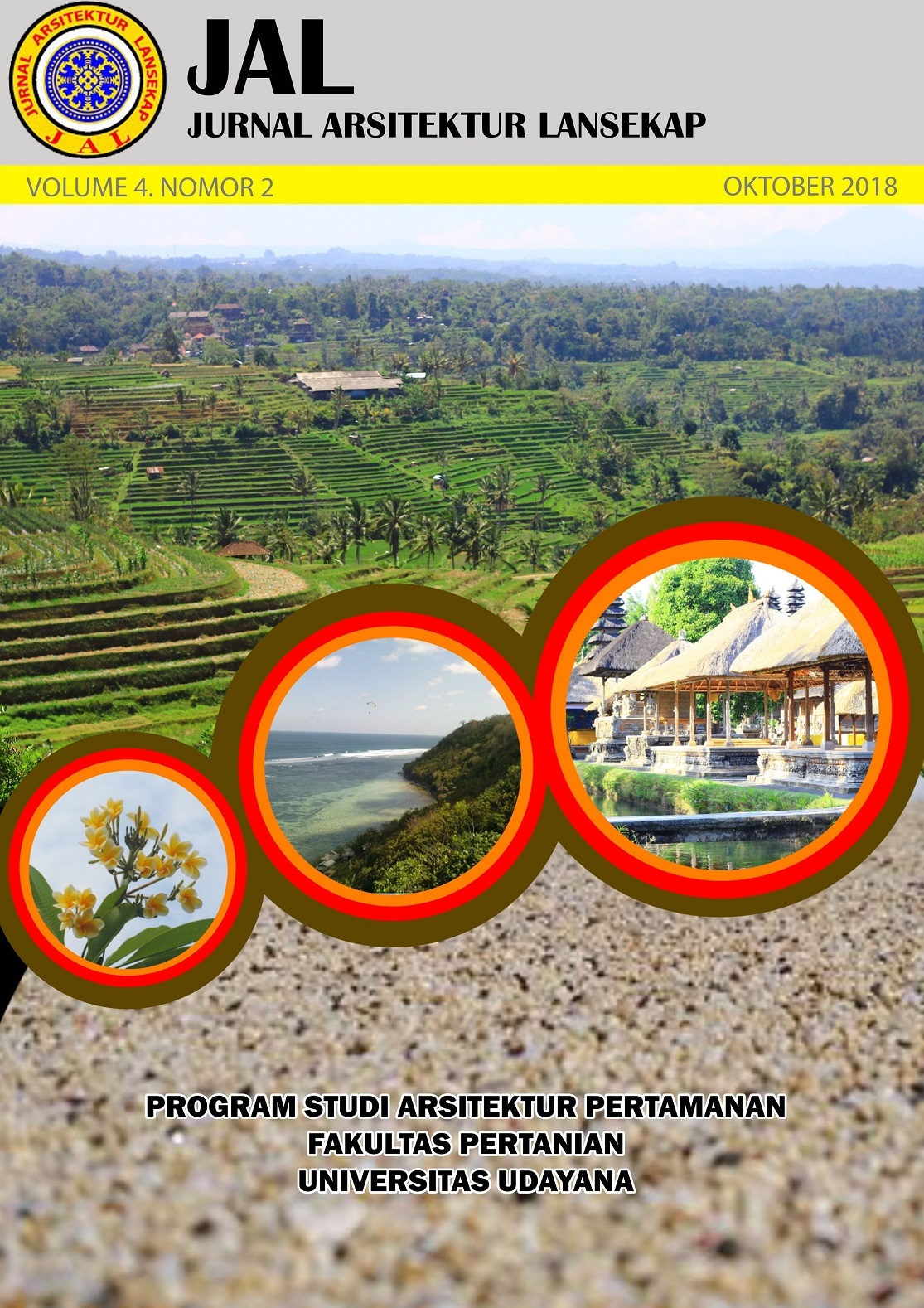Rencana jalur interpretasi wisata alam di Desa Jatiluwih, Kecamatan Penebel, Kabupaten Tabanan
Abstract
Interpretation Track Plan of Nature Tourism at Jatiluwih Village, Penebel District, Tabanan Regency. Jatiluwih Village is one of the villages in Bali Province which has seven springs and rivers with an unspoiled nature. Tourism potential in Jatiluwih Village has not been fully developed into a tourist attraction, so it is necessary to maximize the existing potential for tourism activities. This study aims to determine the potentials of Jatiluwih Village and create a plan of interpretation track. The method used in this research was survey method with descriptive qualitative. Stages of this research were: preparation, inventory, analysis, synthesis, and planning. The message to be conveyed on the plan of this interpretation path was to utilize water maximally and reduce water pollution. The goal to be achieved in this interpretation track was to give knowledge about the use of water for life by involving tourist in water utilization activies. The final result of this research was the plan of interpretation track of nature tourism and interpretation media in Jatiluwih Village. Interpretation media that will be used that is personal service and non personal service.
Downloads
An author who publishes in the Jurnal Arsitektur Lansekap (JAL) agrees to the following terms:
- Author retains the copyright and grants the journal the right of first publication of the work simultaneously licensed under the Creative Commons Attribution-ShareAlike 4.0 License that allows others to share the work with an acknowledgement of the work's authorship and initial publication in this journal
- Author is able to enter into separate, additional contractual arrangements for the non-exclusive distribution of the journal's published version of the work (e.g., post it to an institutional repository or publish it in a book) with the acknowledgement of its initial publication in this journal.
- Author is permitted and encouraged to post his/her work online (e.g., in institutional repositories or on their website) prior to and during the submission process, as it can lead to productive exchanges, as well as earlier and greater citation of the published work (See The Effect of Open Access).
Read more about the Creative Commons Attribution-ShareAlike 4.0 Licence here: https://creativecommons.org/licenses/by-sa/4.0/.







